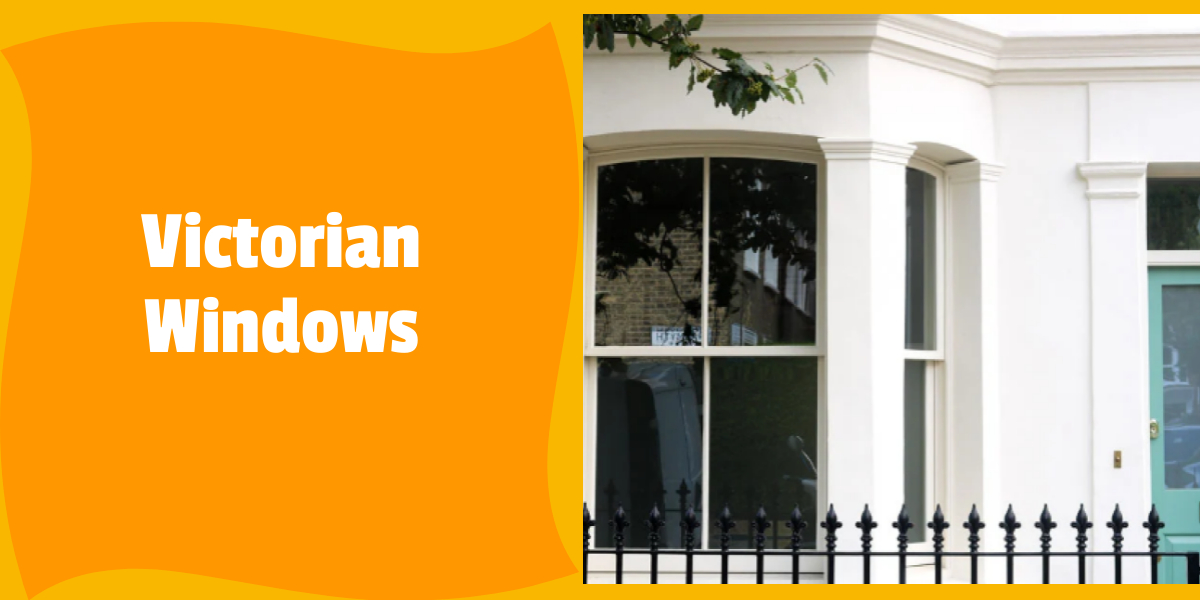
Victorian architecture encompasses the period when Queen Victoria reigned over the United Kingdom for 64 years (1837 – 1901). This succeeded the Georgian era and preceded the Edwardian era.
This architectural style was characterized by a strong sense of nostalgia (sought to revive and reinterpret classic architectural designs from earlier periods).
The Victorian architecture ensured it maintained the traditional symmetry of Palladianism by drawing its inspiration styles from:
- Gothic
- Tudor
- Italianate
John Ruskin (a prominent 19th-century art critic) played a vital role in shaping the revival of traditional architecture. He advocated people should use locally available building materials and techniques. In return, this helped to propel construction into a new era.
Due to these innovations, abundance production methods, and large, pale glass panes became ubiquitous in Victorian architecture. This resulted in a nostalgic revival of classic design.
Contents
- Evolution of Sash Windows: From Georgian to Edwardian and Beyond
- What are the Characteristics and Appearance of Victorian Sash Windows?
- How do Georgia and Victorian-Style Sash Casements Differ?
- Advancements in Glass Technology: Shaping the Victorian Window Style
- The Birth of Float Glass and the Development of Victorian Windows
- But Who Invented This Unique Production Method?
- Victorian Architecture
- Boost the Energy Efficiency of Single-Glazed Victorian Windows and Doors
- Retrofitting Victorian Windows with Heritage Double Glazing
- Restoration of Original Victorian Wooden Windows, Conservatories, and Doors
- FAQs
Evolution of Sash Windows: From Georgian to Edwardian and Beyond
The transition from Georgian to Victorian architecture brought a significant shift in the design of sash windows. The distinctive panel grid design of Georgian sash windows (featuring six-over-six panes) evolved into the more stylish and modern (one-over-one) Victorian timber sash windows.
These windows were characterized by two panes over two panes. Its top and bottom glass panes were separated by a solo vertical astragal pole.
As the Edwardian era commenced, architects began designing sash windows without glazing bars. Sash casement horns were discovered to address the problem of intersection and tenon joint strain and reinforce the casement structure.
However, following the First World War, the glazing business experienced a decrease in the manufacture of sliding sash windows. It was mainly due to the high costs and complex building techniques associated with their production.
Consequently, alternative window designs gained prominence as the architectural landscape continued to evolve.
What are the Characteristics and Appearance of Victorian Sash Windows?

Originating during Queen Victoria’s reign in the 19th century, Victorian windows emerged as a testament to the era’s remarkable innovation and rapid advancements in the manufacturing industry.
These windows distinguished themselves from their Georgian counterparts (typically featured a six-over-six pane design).
Victorian windows showcased a two over-two-panel grid design with run-through sash horns. This sets them apart as a unique architectural element of the time.
How do Georgia and Victorian-Style Sash Casements Differ?

In contemporary times, run-through sash horns are primarily celebrated for their ability to enhance a window’s authentic appearance.
However, during the 19th century, these horns played a crucial role like:
- Reinforcing the window’s structure
- Ensuring the sashes functioned seamlessly and without complications
Advancements in Glass Technology: Shaping the Victorian Window Style
A significant factor contributing to the design of Victorian sash windows was the progress in glass technology during that period.
In the Georgian era, producing small single panes of glass was only possible. This resulted in Georgian windows featuring numerous glazing bars to expand the area of the translucent.
The Birth of Float Glass and the Development of Victorian Windows
Float glass is an innovative glass type crafted through the ingenious float method. During this process, molten glass is carefully poured onto a pool of liquid tin.
Here, it spreads evenly and cools down gradually. The result is a near-perfectly smooth glass surface without physical imperfections and significant optical distortions.
But Who Invented This Unique Production Method?
Thanks to Pilkington! He invented this groundbreaking manufacturing technique in the United Kingdom. This allowed the creation of large, flawless glass sheets.
The Victorian era witnessed remarkable advancements in glass production, such as the ability to mass-produce sheets of float glass. This development eliminated the multiple glazing bars and set the stage for the timeless and elegant design of Victorian windows.
Victorian Architecture
The Victorian era is renowned for its remarkable architectural innovations (both mechanically impressive and visually captivating). This period it has flourished in the wake of the Industrial Revolution, with Queen Victoria’s reign marking a time of rapid advancements.
As a result, Victorian architecture remains a prominent and enduring feature in the United Kingdom, as its main characteristics are visible in homes throughout the country. Examples of these distinctive elements include:
- Asymmetry
- Steeply pitched roofs
- Intricately painted iron railings
In addition, other prevalent features of Victorian-era houses still observed today are:
- Victorian bay window
Bay windows made a striking architectural statement because they extended outwards from a house’s walls. These timber-framed windows came in various shapes and sizes – creating a cosy bay within the room.

This window type gained popularity during this era as building regulations were amended to allow outward projections. Therefore, they became a symbol of affluence in many communities and also allowed enough natural light to penetrate the room.
- Victorian front door
This door type remains highly sought-after in the UK due to its original purpose of creating a majestic entryway to a property.

Generally, Victorian-era front doors feature four unique panels. Their upper two are often embellished with stained glass, thus, enhancing their elegance and allure.
- Victorian conservatory
When imagining a conservatory, the quintessential Victorian-era design frequently emerges as the initial thought for numerous individuals. The distinctiveness of Victorian-era conservatories lies in their gracefully rounded front and intricately faceted roofs, adorned with striking gothic-style spikes.
Boost the Energy Efficiency of Single-Glazed Victorian Windows and Doors
Victorian windows exhibit notable strengths and weaknesses in today’s context. Their primary strength lies in the ability to bestow a period property with a captivating historical charm.
However, their single-glazed design, a product of the limited glass options of the era, represents a significant weakness.
Fortunately, advancements in glass technology now enable homeowners to maintain their property’s aesthetic appeal. In addition, reaping the benefits of double glazing. But how can you achieve this?
At Sash Window Refurbish, we accomplish this using vacuum double glazing.
It’s an ultra-thin variant of double glazing designed to seamlessly replace solo glazing in Victorian style for both windows and doors.
Remarkably, despite its modest 7mm thickness, this double glazing delivers the standard advantages of triple glazings, such as:
- Enhanced energy efficiency and heat retention
- Reduced noise pollution
- Enhanced security for homeowners
Vacuum glazing boasts an impressive u-value of 0.7 W/m²K (surpassing the standard triple glazing). Ultimately, vacuum double glazing is a cost-effective alternative to a complete casement replacement.
Retrofitting Victorian Windows with Heritage Double Glazing
We have extensive experience in retrofitting Victorian windows with heritage double glazing. The good news is our results speak for themselves.

Restoration of Original Victorian Wooden Windows, Conservatories, and Doors
Our experts are not limited when it comes to restoration. We can handle Victorian wooden casements, french doors, and conservatories to their original splendour.
Some of the issues your wooden frames may experience include the following:
- Rotten beading
- Decaying window sills
- Loose putty
Thankfully, our skilled team is dedicated to resolving these timber frame issues. Therefore, we make your walls look their best and save you from the costly route of complete casement replacement.
As time goes by, it’s common for these elements to become faulty or break. But no more worries! We’re here to address several such problems, like changing box casement weights, replacing broken ribbons, and opening stuck sash windows (a more affordable option).
FAQs
Do sash windows refer to Victorian or Georgian?
These windows were present in both eras. Georgian-era sash casements were characterized by design featuring six panes over six panes with numerous bars. On the other hand, Victorian sash windows predominantly showcased a two-over-two-panel grid design equipped with sash horns.
Why do Victorian houses have bay windows?
In the Victorian era, housing regulations became more lenient. Therefore, the installation of outward-protruding windows was permitted in properties.
These windows quickly gained popularity as a status symbol among various communities. In addition, they allowed an abundance of natural light into the property.
Is it that Victorian houses only had sash windows?
No. While sash windows enjoyed immense popularity in the Victorian era, they were not the sole window design.
What varieties of casements do Victorian houses have?
During the Victorian era, sash windows were the most popular design. However, casement windows were also quite common.
The popularity of bay windows increased during this time due to relaxed housing regulations (permitted windows to protrude from properties). This design created additional space and allowed more light to enter the room.



